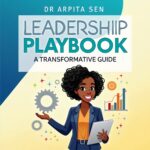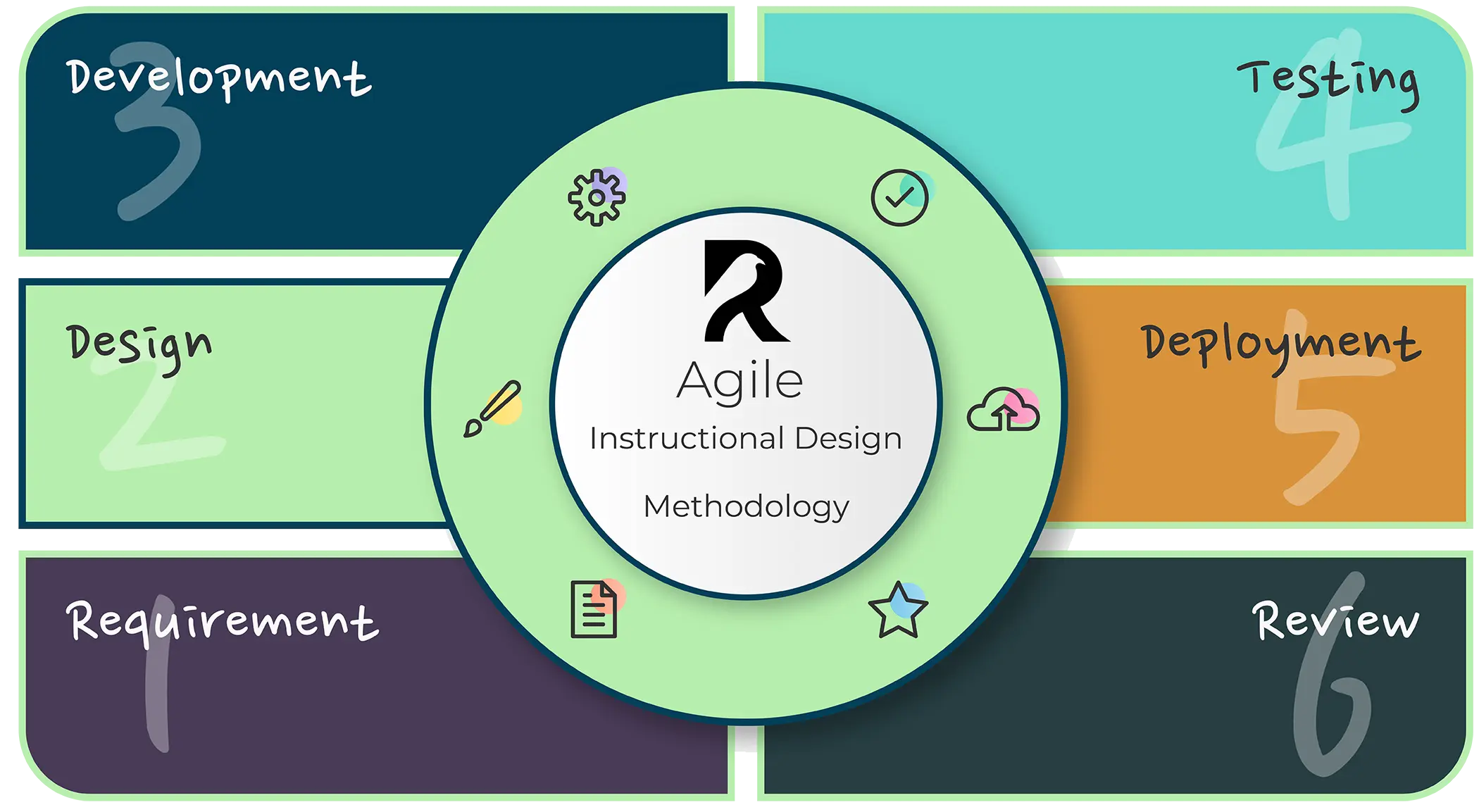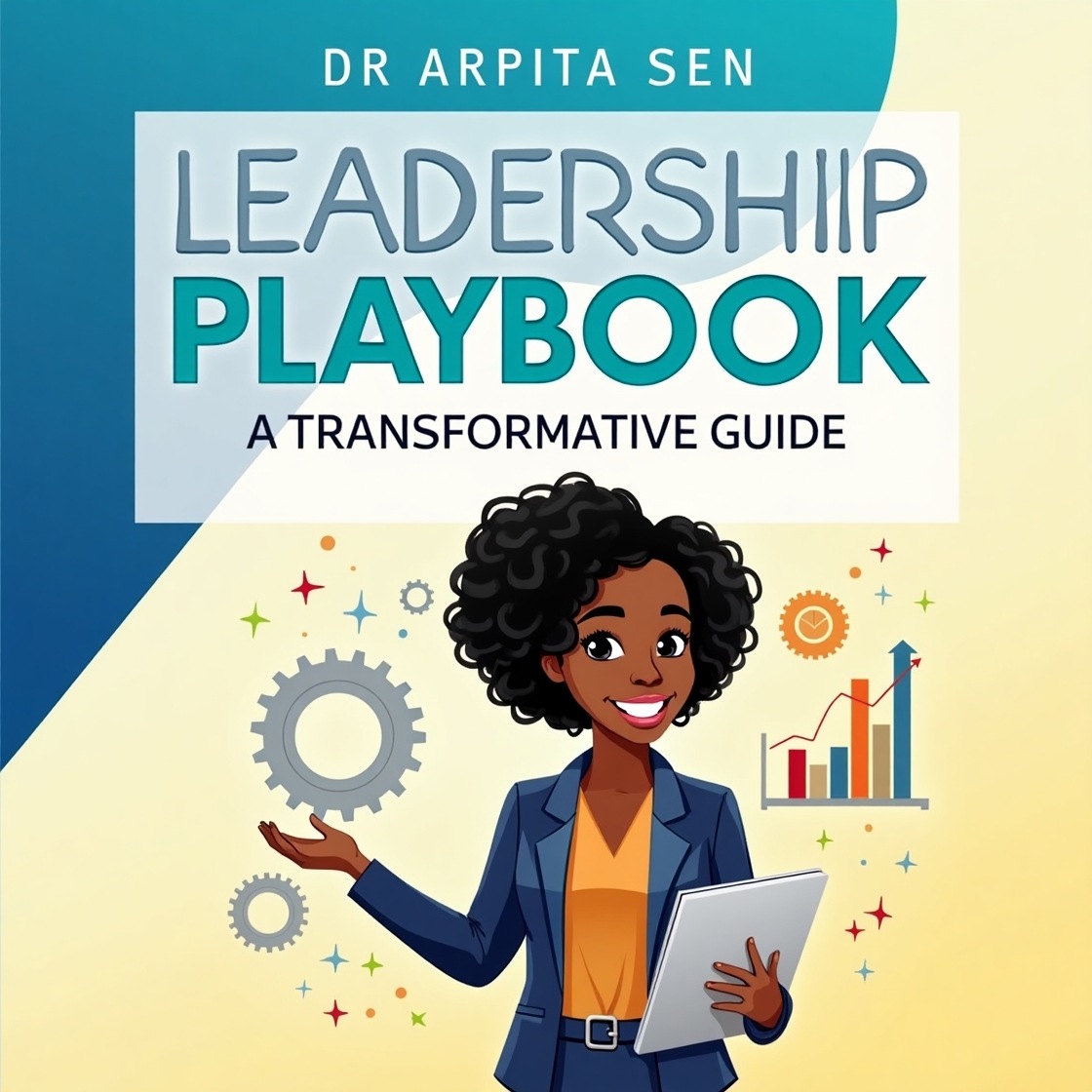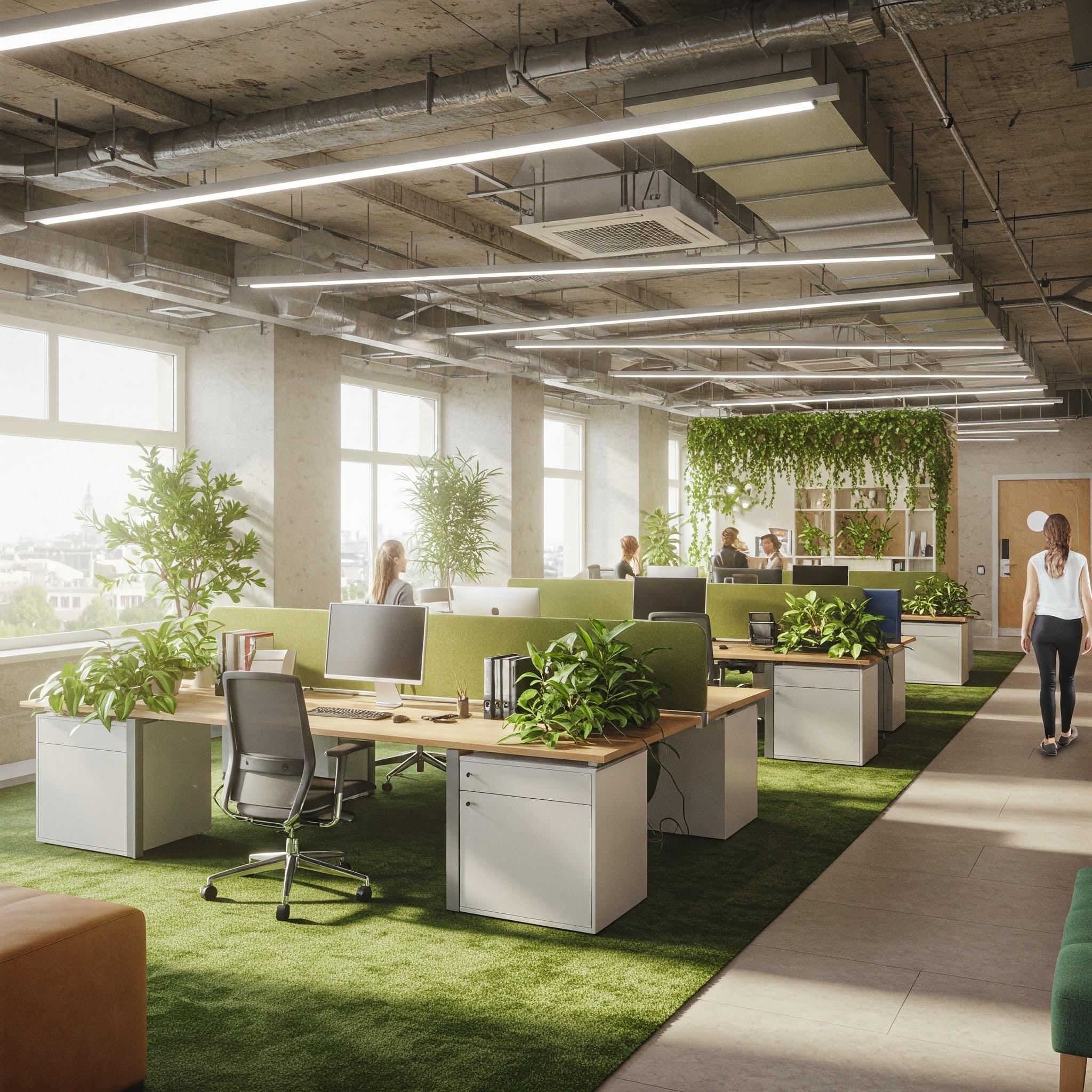In the dynamic landscape of today’s business world, Human Resources (HR) professionals are facing unprecedented challenges in talent management and employee development. The traditional approach to learning and development is no longer sufficient to meet the evolving needs of organizations and their workforce. Enter Agile Learning Design, a revolutionary methodology that is transforming the HR domain by providing a more adaptive, responsive, and effective way to nurture employee skills and foster continuous learning.
Understanding Agile Learning Design:
Agile Learning Design draws inspiration from the Agile methodology commonly used in software development. This approach emphasizes flexibility, collaboration, and responsiveness to change. In the HR domain, Agile Learning Design is a mindset and a set of practices that enable organizations to create learning experiences that are not only tailored to individual needs but also capable of adapting to the rapidly changing business environment.
Key Principles of Agile Learning Design in HR:
Iterative Development: Agile Learning Design embraces the concept of iterative development, where learning materials and programs are created incrementally and improved upon through feedback loops. This allows HR professionals to respond quickly to changing business needs and incorporate feedback from learners in real-time.
Example: IBM’s Agile Learning Transformation
IBM has embraced Agile Learning Design to transform its approach to employee development. The company adopted an iterative development process, breaking down large learning projects into smaller, more manageable components. This approach allows for continuous feedback and adjustments, ensuring that learning content remains relevant and aligns with evolving business needs.
Collaborative Approach: Collaboration is at the heart of Agile Learning Design. HR teams work closely with subject matter experts, learners, and other stakeholders to ensure that the learning content is relevant, engaging, and aligns with organizational goals. This collaborative approach fosters a sense of ownership and commitment among learners.
Example: Google’s “Googler to Googler” Learning Sessions
Google’s “Googler to Googler” (g2g) learning sessions exemplify a collaborative approach. Instead of relying solely on traditional training methods, Google encourages employees to share their expertise and experiences with their peers. This collaborative learning model fosters a sense of community and enables knowledge transfer in a more informal, yet highly effective, setting.
Adaptive to Change: The business landscape is constantly evolving, and HR must be equipped to adapt swiftly. Agile Learning Design enables HR professionals to respond to market changes, technology advancements, and other external factors by adjusting learning programs in a timely manner. This adaptability ensures that employees are always equipped with the latest skills.
Example: Microsoft’s Continuous Learning Culture
Microsoft has embedded a continuous learning culture within its organization. The company regularly reassesses the skills needed to drive innovation and responds swiftly by providing employees with resources to acquire those skills. This adaptability ensures that Microsoft’s workforce remains equipped with the latest knowledge and capabilities.
User-Centric Design: The focus of Agile Learning Design is on the end user – the employees. By adopting a user-centric design approach, HR professionals can tailor learning experiences to individual preferences, needs, and learning styles. This personalized approach enhances engagement and improves the overall effectiveness of learning initiatives.
Example: Salesforce’s Trailhead Platform
Salesforce, a global leader in customer relationship management, employs a user-centric design approach through its Trailhead platform. Trailhead offers a personalized learning experience, allowing employees to choose learning paths based on their roles and interests. This approach ensures that the learning experience is relevant and engaging for each individual.
Continuous Feedback and Improvement: Agile Learning Design thrives on continuous feedback loops. Regular assessments, surveys, and feedback from learners allow HR teams to identify areas for improvement and make adjustments accordingly. This continuous improvement cycle ensures that learning programs remain relevant and effective over time.
Example: Spotify’s Squad Health Checks
Spotify, known for its agile and innovative culture, incorporates Squad Health Checks as part of its Agile Learning Design. These regular check-ins involve team members providing feedback on various aspects of their work, including learning and development initiatives. This continuous feedback loop allows Spotify to make rapid improvements to its learning programs.
Benefits of Agile Learning Design in HR:
Increased Employee Engagement: Agile Learning Design creates a more engaging and interactive learning experience, leading to increased employee participation and enthusiasm for professional development.
Example: Airbnb’s Learning Circles
Airbnb introduced Learning Circles, a form of peer-to-peer learning groups where employees come together to learn and share knowledge. This approach increases engagement by fostering a collaborative learning environment, creating a sense of community among employees.
Faster Time-to-Competency: The iterative nature of Agile Learning Design enables organizations to deliver targeted learning content quickly, reducing the time it takes for employees to acquire the necessary skills and knowledge.
Example: AT&T’s Microlearning Initiatives
AT&T leverages microlearning, breaking down training content into smaller, easily digestible modules. This agile learning approach significantly reduces the time required for employees to acquire new skills, allowing them to apply their knowledge more rapidly in their roles.
Improved Alignment with Business Goals: By responding promptly to changing business needs, Agile Learning Design ensures that learning programs are closely aligned with organizational objectives, contributing to the overall success of the business.
Example: Siemens’ Learning Campus
Siemens’ Learning Campus is designed to align closely with the company’s strategic goals. By regularly assessing skill gaps and business needs, Siemens ensures that its learning programs directly contribute to achieving organizational objectives.
Enhanced Flexibility: The flexibility inherent in Agile Learning Design allows HR professionals to adapt to unforeseen challenges, such as the sudden need for remote learning or the integration of new technologies into the workplace.
Example: Cisco’s Connected Learning
Cisco’s Connected Learning approach leverages technology to provide employees with flexible learning options. This includes virtual classrooms, on-demand courses, and collaborative learning platforms, allowing employees to access learning resources anytime, anywhere.
Optimized Resource Allocation: Agile Learning Design optimizes the use of resources by focusing on what works best for learners. Unnecessary elements are eliminated, and resources are directed towards creating high-impact learning experiences.
Example: Unilever’s Learning Ecosystem
Unilever has created a comprehensive learning ecosystem that optimizes resource allocation. By utilizing a mix of in-house expertise, external partnerships, and digital platforms, Unilever ensures that resources are allocated efficiently to meet the diverse learning needs of its global workforce.
Agile Classrooms
Agile classrooms refer to learning environments that incorporate principles and practices inspired by Agile methodologies commonly used in software development. The concept of agile methodologies has expanded beyond the realm of software development to influence various industries, including education. In an agile classroom setting, the focus is on flexibility, collaboration, adaptability, and student-centric learning.
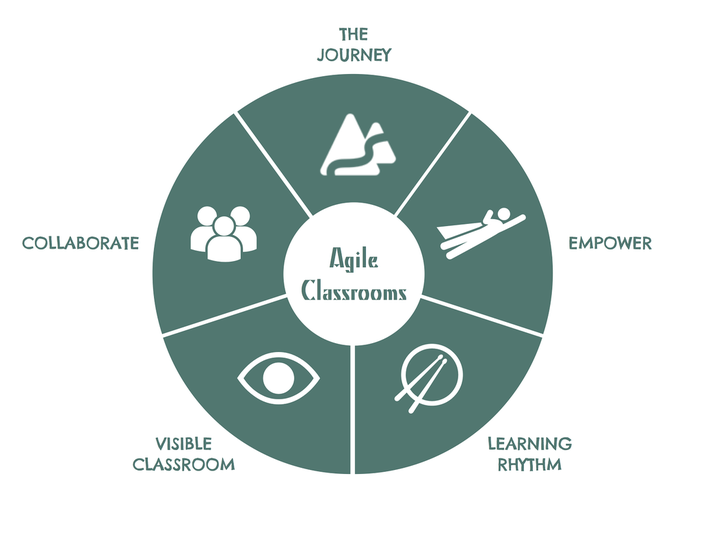
Here are some key characteristics and principles associated with agile classrooms:
- Flexibility in Learning Spaces: Agile classrooms often feature flexible and adaptable physical layouts. Furniture and technology are arranged to support collaborative activities, group discussions, and individual work. The design allows for quick and easy reconfiguration to accommodate different learning activities and promote a dynamic environment.
- Iterative Teaching and Learning: Similar to the iterative development process in Agile methodologies, agile classrooms embrace an iterative approach to teaching and learning. Lessons are continuously evaluated and adjusted based on feedback, student progress, and emerging needs. This iterative cycle helps educators refine their instructional methods for better outcomes.
- Student-Centric Learning: Agile classrooms prioritize student needs and interests. The learning experience is tailored to individual students, allowing them to progress at their own pace and explore topics that align with their preferences. This student-centric approach enhances engagement and encourages a sense of ownership over one’s learning journey.
- Collaborative Learning Environments: Collaboration is a cornerstone of agile classrooms. Students are encouraged to work together on projects, solve problems collaboratively, and share their insights. This approach mirrors the collaborative nature of Agile methodologies where cross-functional teams work together to achieve common goals.
- Adaptive Curriculum Design: The curriculum in agile classrooms is designed to be adaptive and responsive to the evolving needs of students and the dynamic nature of the learning environment. Educators regularly review and adjust the curriculum to incorporate new content, technologies, and teaching strategies that align with current educational best practices.
- Technology Integration: Agile classrooms leverage technology to enhance the learning experience. Digital tools and platforms are used to facilitate communication, collaboration, and personalized learning. This integration of technology enables students to access resources, collaborate with peers, and engage with content in diverse ways.
- Frequent Feedback and Assessment: Agile classrooms emphasize the importance of regular feedback and assessment. Teachers provide timely feedback on student performance, and assessments are used not only to evaluate learning but also to inform instructional decisions. This continuous feedback loop ensures that students receive support and guidance throughout their learning journey.
- Empowering Educators: In agile classrooms, educators are empowered to make decisions that enhance the learning experience. They have the flexibility to experiment with different teaching methods, adapt to the needs of their students, and collaborate with colleagues to share best practices. This empowerment fosters a culture of professional growth and development.
- Agile Mindset: Agile classrooms instill an agile mindset among both educators and students. This mindset values adaptability, embraces change, and encourages a positive attitude toward learning challenges. Students learn not only subject-specific content but also essential skills such as problem-solving, critical thinking, and adaptability.
- Continuous Improvement: Just as in Agile methodologies where continuous improvement is a core principle, agile classrooms are committed to ongoing enhancement. Educators and administrators actively seek ways to improve teaching methods, curriculum design, and the overall learning environment based on data, feedback, and emerging educational trends.
Conclusion:
Agile Learning Design is revolutionizing the HR domain by providing a framework that adapts to the fast-paced and ever-changing nature of the business world. By embracing agility, collaboration, and user-centric design, HR professionals can ensure that learning and development initiatives are not only effective but also contribute significantly to the success and resilience of the organization. As businesses continue to navigate a landscape marked by uncertainty and innovation, Agile Learning Design stands out as a key enabler for building a skilled, adaptable, and empowered workforce.

